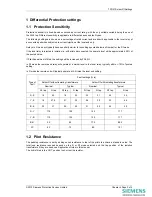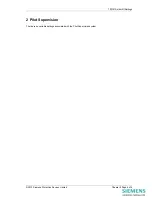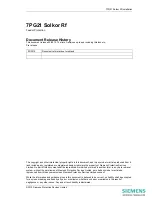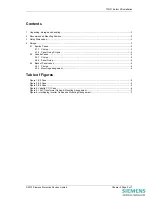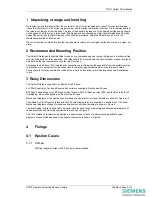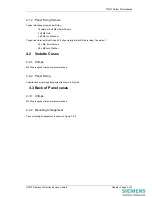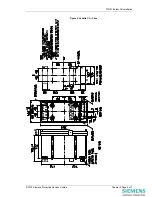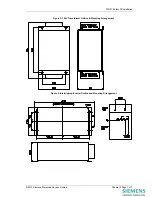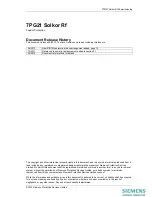
7PG21 Solkor Rf Commissioning
©2012 Siemens Protection Devices Limited
Chapter 6 Page 3 of 21
1. Introduction
This section details operating recommendations for Solkor R and Solkor Rf current differential pilot wire feeder
protection. It also covers optional pilot supervision schemes and intertripping schemes.
2. Solkor R/Rf Relay
2.1 Test equipment required
The following equipment is required:-
•
A 500V insulation-resistance test-set.
•
A heavy-current transformer capable of injecting a minimum of 10 to 15% of C.T. rated primary current
through the feeder.
•
A secondary injection test set ( 0 -10A ). See below
•
An ammeter and a metering current-transformer for measuring primary currents.
•
Three multi-purpose indicating instruments.
•
An
ohmmeter.
•
200 watt 2000 ohm resister ( DC to AC inverter test ).
During normal operation, power supply for the Solkor R/Rf is derived directly from the system current
transformers. During testing, this power must be supplied by the current injection test equipment.
The operating burden of a connected pair of Solkor R/Rf relays is 1.5 – 3 VA at setting which corresponds to a
secondary voltage of up to 6 V AC RMS at 0.25 A for R-E fault loop on a 1A rated relay using N tap. (Worst case
is actually for a 0.5 A rated relay on N1 tap which will require 16.7 V).
When testing with a modern numeric secondary test set, sufficient driving voltage is required to provide the
required current without distortion due to overload. Presence of this distortion may be reported as overload by the
test set but also can usually be recognised by examination of errors in the test results. If correct results are
achieved for higher current setting fault loops such as R-Y and Y-B whilst the test set reports low sensitivity (high
setting) on the lowest current setting fault loops (R-E, Y-E etc), the test equipment should be investigated further.
Some commercially available test sets are known to exhibit this behaviour due to internal voltage limits.
2.2 Test programme
Apply the tests in the order below:-
•
Check of connections.
•
Secondary wiring insulation resistance tests.
•
Current transformer ratio and polarity tests.
•
Pilot
tests.
•
Overall fault setting tests.
•
Circuit breaker tripping tests.
•
Stability
tests.
2.3 Precautions
Do not open-circuit the secondary winding of a current-transformer while there is a current in its primary winding
otherwise a high voltage will be produced in the secondary which may be dangerous to personnel and may also
damage the secondary wiring insulation.
Check that all connections between the various pieces of equipment are in accordance with the appropriate
schematic diagram and that all connections are tight.
Epsilon cases provide CT shorting between terminal 23-24, 25-26 and 27-28 as pairs. Although terminals 24-26-
28 are linked internally within the relay, these terminals must be linked externally by panel wiring to prevent open
circuit of current transformers if the relay chassis is withdrawn from the case. Check that this wiring is present.




